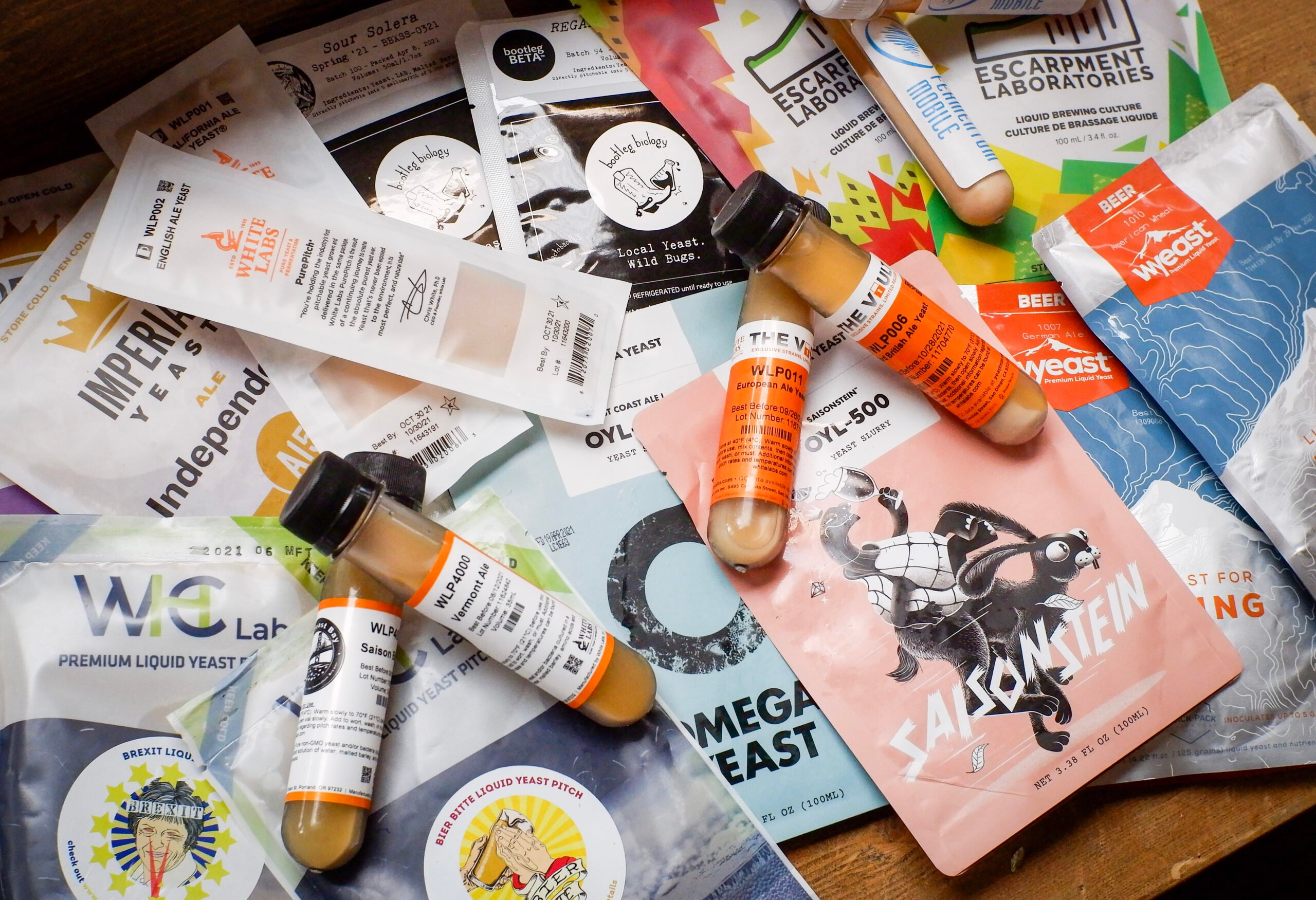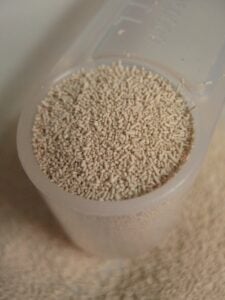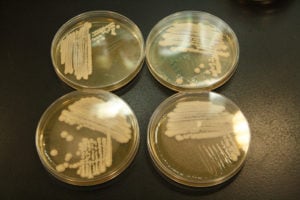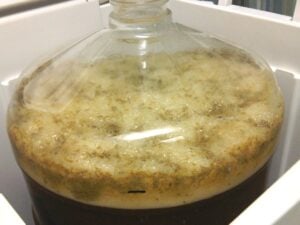Brew With Us ESSENTIALS – introduction to yeast

Let’s get yeasty!
Malt and hops are vital to beer – but they won’t do it alone. Otherwise you just have sugary, hoppy water!
Yeast is what turns that wort into beer. Far from just a simple additive, yeast is an essential ingredient to be treated with care and respect.

When you look at granules of dried yeast, it can be easy to forget it’s a living organism. Yeast is a microscopic type of fungus that can be found almost everywhere in the environment, and particularly on flowers and fruit skins. There are thousands of species, but Saccharomyces cerevisiae is the most widely cultivated. This one species is used in all kinds of brewing, winemaking, distilling, and baking, with hundreds of specially bred strains suited to each use. The yeast you use to make bread is the same species as the yeast you make beer, but if you mixed up the packets you’d get very different results!

Saccharomyces cerevisiae – we’ll just call it “Sacc” for short – is useful because of its digestive process. Sacc breaks down sugar for food and releases alcohol and carbon dioxide as byproducts. This is fermentation, and the exact way this is done and the flavours released along the way is what makes Sacc such a dominant variety of yeast.
There are other yeasts and bacteria that can consume the sugars in wort, some of them welcome and some definitely not. We’ll meet some of these later on.
A blank slate
Many of the processes we do in brewing will kill yeast and other microorganisms. Most Sacc strains won’t survive normal mash temperatures, let alone a full boil, and we know that hops have strong anti-microbial properties. Boiling the wort and adding hops provides a “blank slate” for the yeast we add afterwards, so it gets all the wort sugars to itself.
Once yeast has made itself comfy it is very good at keeping other bugs out. Fermentation lowers pH, meaning the wort becomes more acidic, which many microorganisms can’t cope with. The alcohol produced is also lethal to many other bugs. For example, alcohol will kill the spores of bacteria that can survive boiling temperatures, including the species that causes botulism! So the booze in beer is an important preservative.
Yeast is very good at out-competing other microorganisms, but there are some bugs that can survive alongside it. These microbes are the ones we need to be very careful of as they can ruin your beer. Acetobacter, which is commonly carried by fruit flies, thrives in low pH conditions and converts alcohol into acetic acid – vinegar!

This is why it’s vitally important to be as sanitary as possible throughout a brew and particularly when you deal with your fermentation equipment. You want to start with a blank slate for the yeast to work from, free of any other microbes – then you want to keep it that way and make sure no nasties get in.
Growing up
Yeast will multiply to take advantage of the food available. It produces flavours in this growth phase, so brewers almost always start with a small quantity of yeast and let it grow in the beer. Adding yeast to beer is called pitching. In a later chapter we’ll talk about how much to add (the pitching rate) and what temperature to work at (pitching and fermentation temperatures).

During this first growth phase, lots of carbon dioxide is produced. The CO2 bubbles up through the wort and creates a big head of foam on top. This foam is called krausen and is a sign of a healthy fermentation. As fermentation goes along, the krausen falls away. Less CO2 is produced, so you might not see as many bubbles going through your airlock (this is why we suggest using a hydrometer to measure fermentation – more on that later too).
The yeast is still working: it’s just now in a different phase, where it’s cleaning up after itself. There are a lot of chemical processes happening in this phase, many of which are really complex. Fortunately, the yeast knows what it’s doing, so we can just let it get on with it! Most of the yeast flavours we’re looking for are produced in that first growth phase, but there are lots of other flavours produced then too – this clean-up phase gets rid of the things that don’t taste as good.
Going down
Yeast forms big clumps as it grows and gets fat on the sugars in your wort. These clumps sink to the bottom of the fermenter and form a thick layer called a yeast cake. Pure yeast doesn’t taste that great (very similar to Marmite!) and your beer won’t look great with clumps of yeast swirling around, so when we transfer the beer out of the fermenter into a keg (or bottles, etc.) we pull clear beer from above the yeast cake.
However, there will still be microscopic yeast in what looks like clear beer. This means you can begin fermentation again by adding more sugar. If you add sugar and seal up your bottle, the carbon dioxide from this new fermentation will be absorbed into the beer, carbonating it. This will produce a tiny new yeast cake at the bottom of your bottle, so you’ll want to avoid pouring that into your glass. If you use this method with a keg, you can use a floating dip tube to pull clear beer from above your new yeast cake.
To remove all the yeast, you would need to use a filter – a very fine one, too, under 1 micron (a human hair is typically 20-40 microns thick!). This small a filter will sieve out some of the proteins and other compounds in your beer along with the yeast, so many brewers prefer not to filter. The microscopic yeast in suspension is too small to add any negative flavours and won’t begin fermenting again unless you deliberately add more sugar, so there’s no real harm in leaving it in your beer.
Sacc it to me!
There are hundreds of “clean” ale and lager yeast strains to choose from.
In our next part, we’ll show you where to begin!


